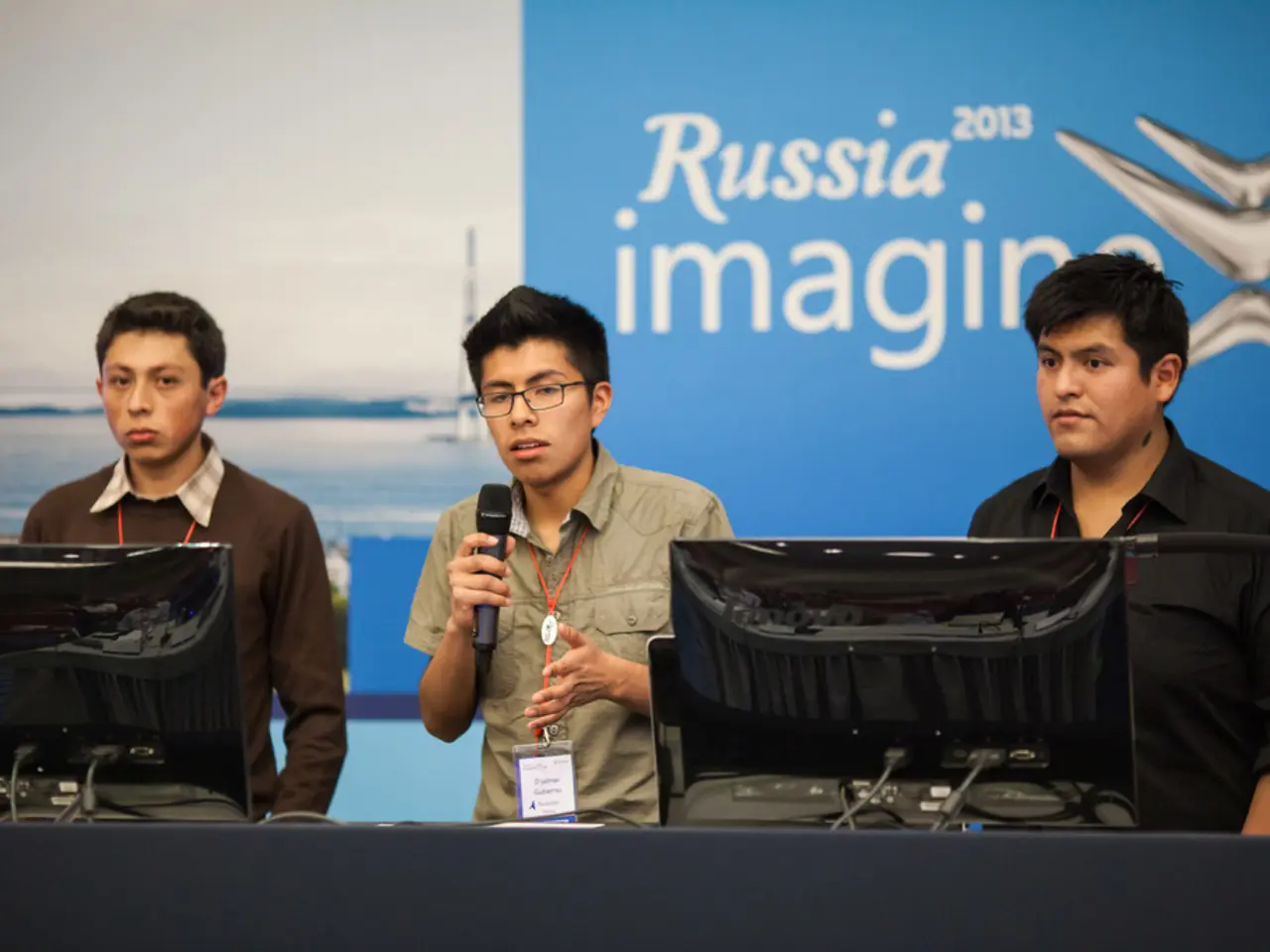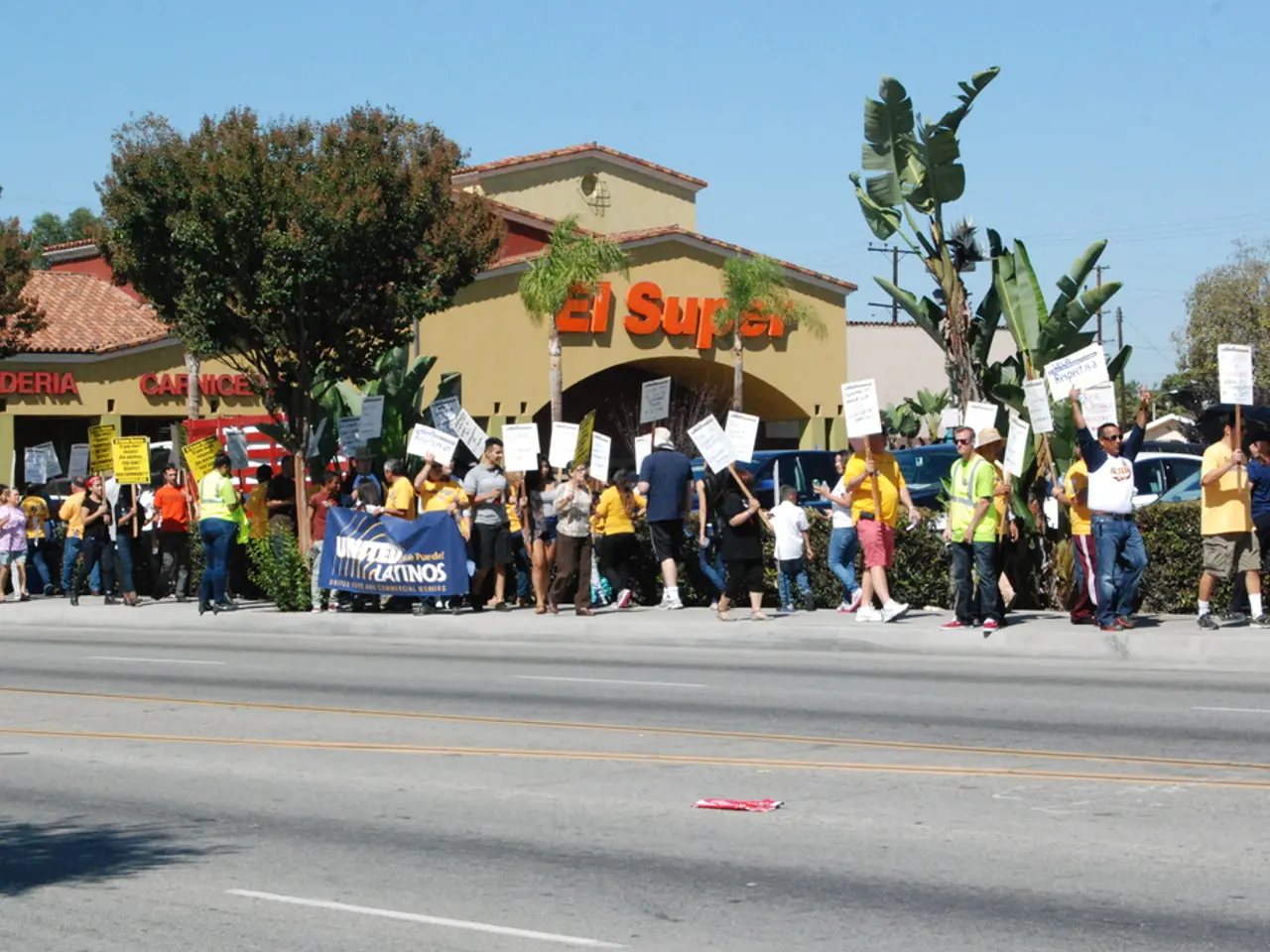Contentious Polish Election Indicates a Broader Dilemma for Liberal Democracy
In recent years, the political landscape of Western democracies has undergone a significant shift, with the rise of populist leaders and the erosion of centrist coalitions. This transformation can be traced back to a variety of interconnected factors, as highlighted by social scientists.
The decline of centrist coalitions is not merely a matter of rhetoric, but demands political imagination and institutional reform. The outcome of the Polish presidential election, with Karol Nawrocki, representing Poland's national-conservative Law and Justice Party, winning 50.9 percent of the vote, mirrors this larger pattern seen across Western democracies.
The root causes of this shift are manifold. Firstly, inadequate responses to socio-economic issues such as rising costs of living, immigration, and bureaucratic overreach have led to liberal and centrist parties losing credibility among voters who feel left behind or alienated.
Secondly, the shrinking ideological space for liberal parties is evident as conservative platforms shift rightward and populist narratives gain traction, particularly on issues like national identity, immigration, and sovereignty.
Thirdly, the polarization and fragmentation of traditional political bases have made it difficult for centrist coalitions to maintain broad coalitions due to conflicting interests between educated elites and working-class voters, and tensions within progressive agendas that alienate some voters.
Fourthly, the resurgence of nationalist and right-wing populism stems from widespread dissatisfaction with globalization, perceived loss of national control, and challenges to the liberal democratic consensus that dominated the post-Cold War era.
Geopolitical changes and policy crises, including challenges within the EU (such as Euroscepticism and migration crises) and strained transatlantic relations, have further destabilized traditional liberal coalitions.
The failure of centrist parties to adapt their messaging and policies effectively to new economic and cultural anxieties has allowed populist leaders to exploit these issues and gain populist appeal.
Populist leaders have capitalized on the frictions long inherent within the liberal project, giving a voice to constituencies who felt ignored by the centrist consensus. The election revealed a deep societal division between conservative rural provinces and progressive urban centres, with the election seeing a record voter turnout of 71.6 percent.
To counter this trend, liberal democracy must cultivate its own political language, acknowledging the costs of globalization, reaffirming the importance of national and local community, and making a compelling case for democratic pluralism without resorting to abstraction or inevitability.
The collapse of the Soviet Union removed a crucial narrative tool for liberalism, as it no longer had a clear contrast with an illiberal adversary. A new adversary, such as China, Russia, or Mr. Trump, may not unify democracies in the same way they once did, and public opinion is more divided over how to respond to illiberal forces.
In conclusion, the decline of centrist coalitions arises from their inability to address complex contemporary issues inclusively, leading to a vacuum filled by populist leaders who mobilize disaffected segments of the electorate with nationalist, anti-elite, or anti-globalization rhetoric. This trend also reflects broader democratic challenges in coping with economic inequality, cultural fragmentation, and institutional trust deficits since the Cold War.
[1] de Vries, C., et al. (2019). The Populist Challenge to Liberal Democracy: Understanding the Causes and Consequences of the Rise of Populist Parties in Europe. Oxford University Press.
[2] Foa, R., & Mounk, Y. (2016). The Danger of Deconsolidation: The Democratic Disconnect. Journal of Democracy, 27(1), 5-21.
[3] Norris, P., & Inglehart, R. (2019). Cultural Backlash: Trump, Brexit, and Authoritarian Populism. Cambridge University Press.
[4] Kaltwasser, C., et al. (2017). Contesting Democracy: Political Parties, the Media, and the Populist Radical Right. Oxford University Press.
[5] Taggart, P., & Szczerbiak, A. (2010). Populism and the Radical Right in Europe. Routledge.
- The rise of populist leaders in Western democracies can be traced back to public dissatisfaction with policy-and-legislation issues such as rising costs of living, migration, and bureaucratic overreach, leading to a decline in the credibility of liberal and centrist parties.
- The shift in politics towards more conservative and populist narratives is influenced by war-and-conflicts, geopolitical changes, and policy crises, including challenges within the EU and strained transatlantic relations, which have eroded the cohesion of traditional liberal coalitions.
- The polarization and fragmentation of traditional political bases, due to conflicting interests between educated elites and working-class voters, tensions within progressive agendas, and a shrinking ideological space for liberal parties, have made it challenging for centrist coalitions to maintain broad coalitions and counter the appeal of populist leaders.







